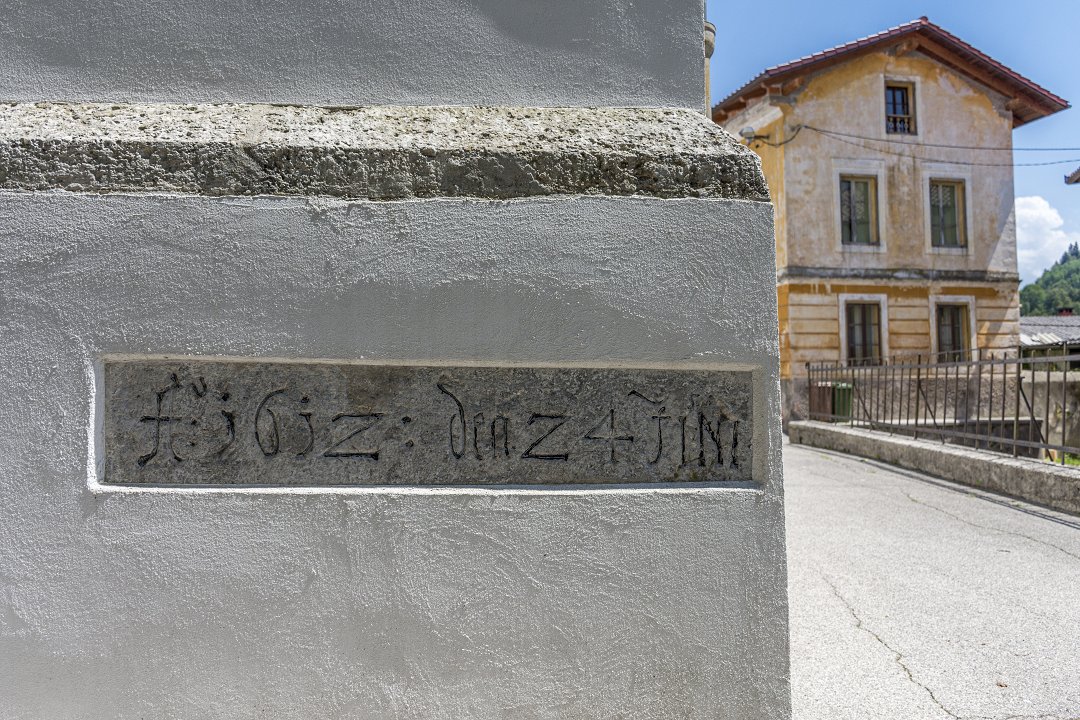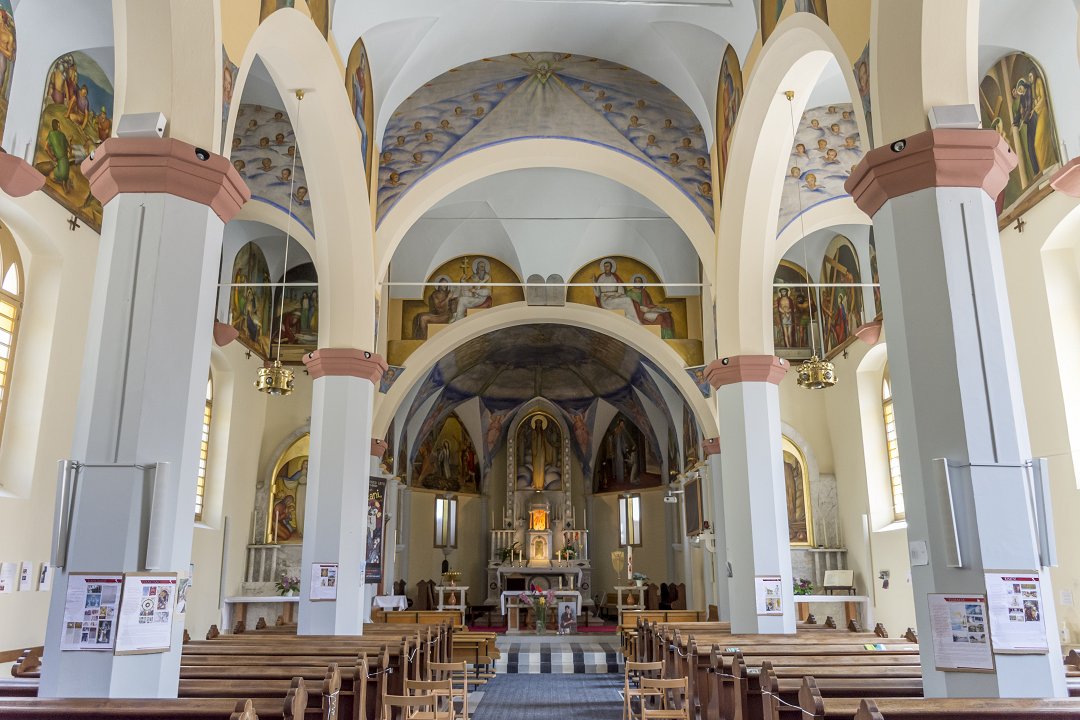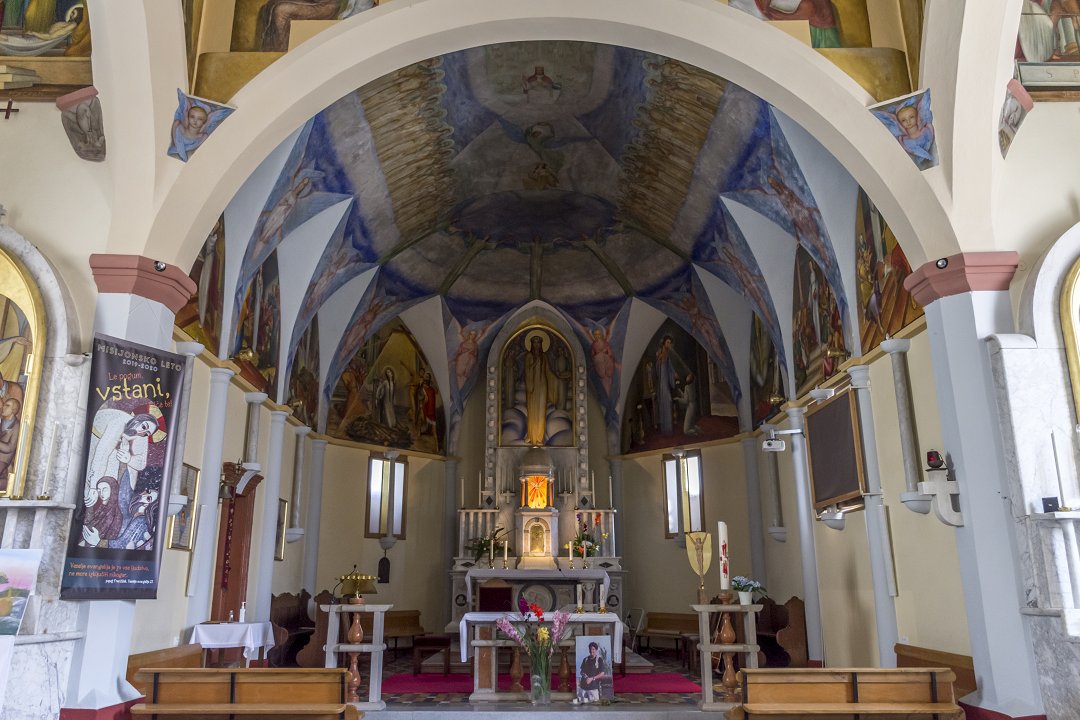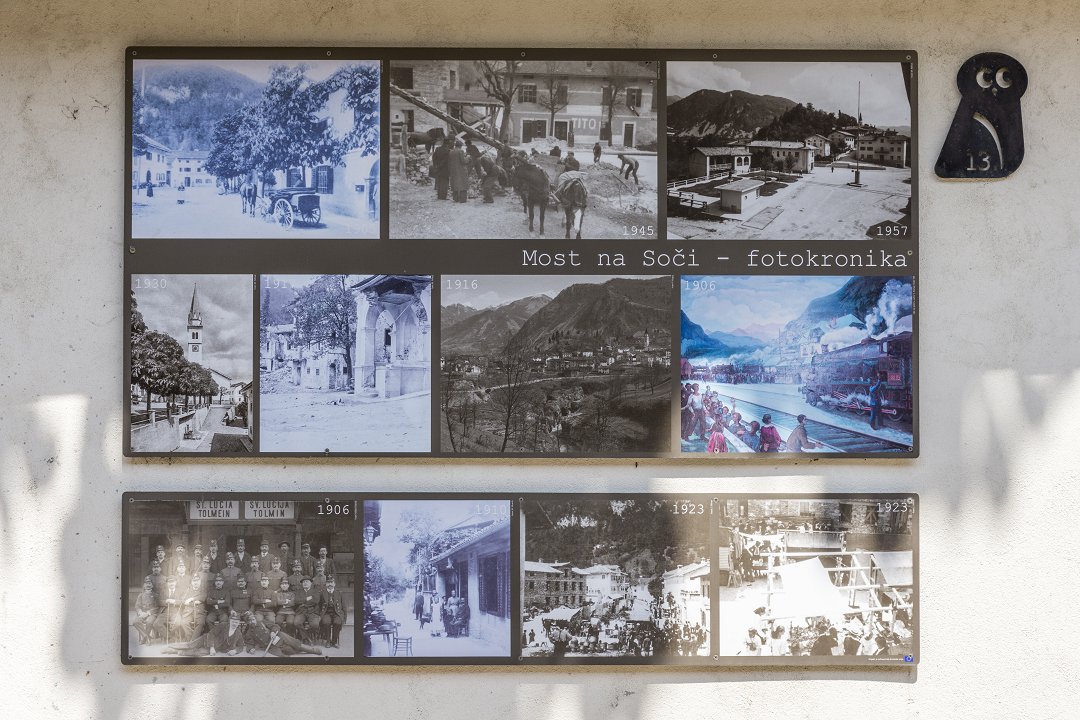You are Tone Kralj – a painter renowned both locally and internationally. Not long ago your works were exhibited in Paris, Milan, Los Angeles, Belgrade, Ljubljana and Vienna. After a long period, you return to Most Na Soči in 1940. A lot has changed since 1927 when you were restoring the altars in St. Lucy’s Church: you are married now and you have a daughter. The parish priest Abram, a writer and mountaineering enthusiast who you got along very well with when you first worked with him, has been relocated due to fascism. The changed landscape also surprises you – once popular among tourists, the confluence of the Idrija River and the Soča River has been submerged by the lake.
Work of great significance
In the last few years you have been painting in the territory of Slovenia that was annexed to Italy after World War I. When painting churches, you often used national symbols which was very risky. Your artistic endeavours, carefully chosen motifs and your presence alone nevertheless built up the nationhood, while your paintings and a comprehensive approach to reconstructing St. Lucy's Church created a monument, which experts will not recognize until half a century later.





